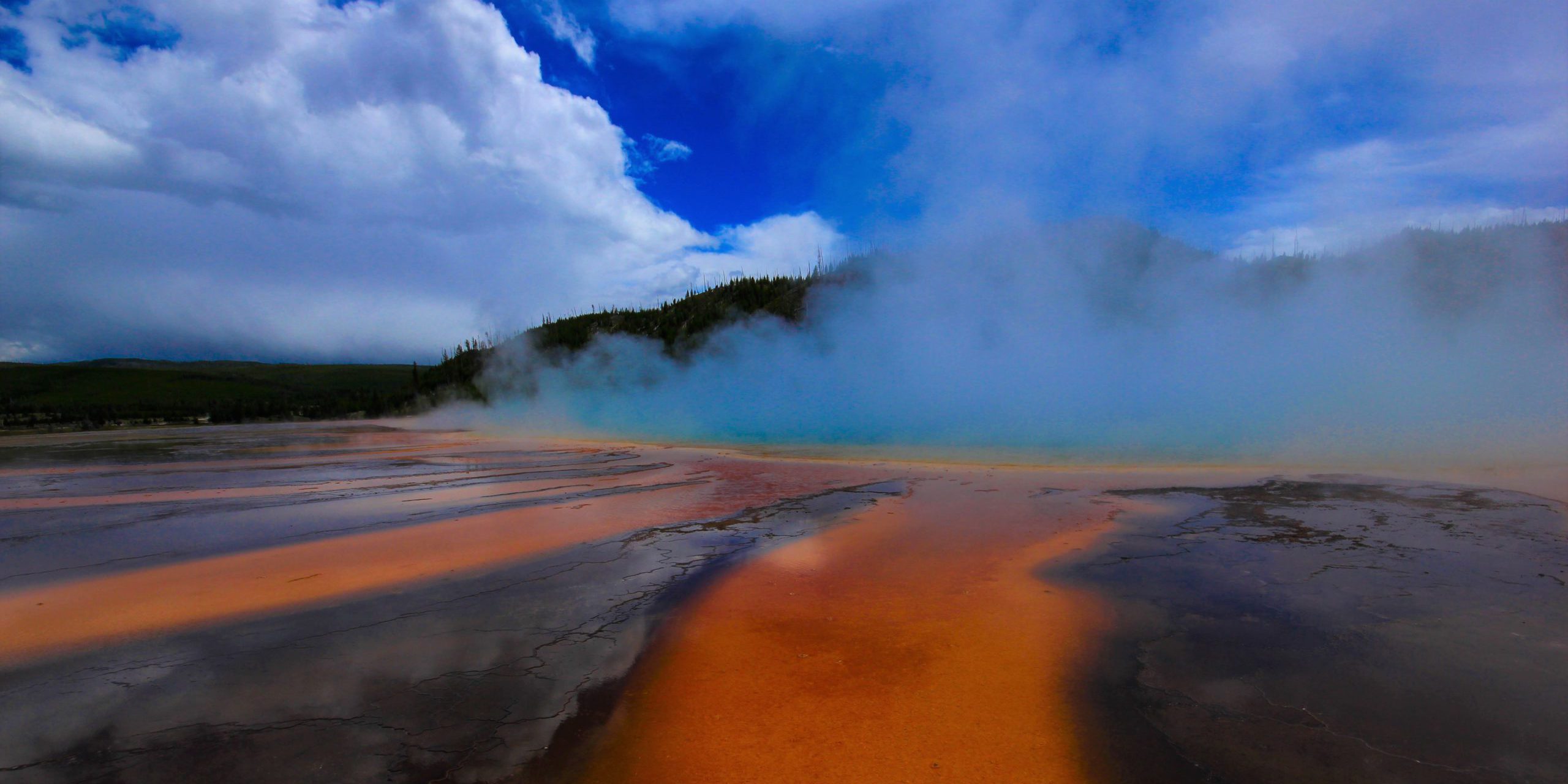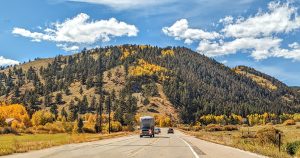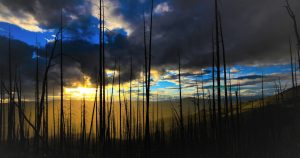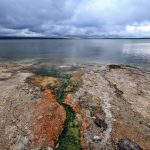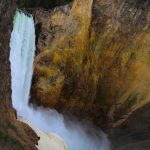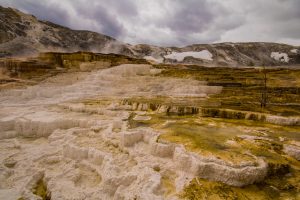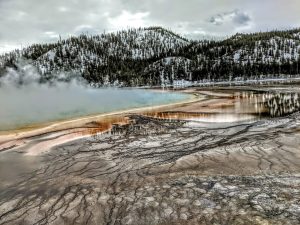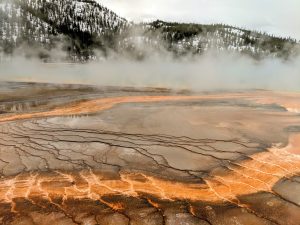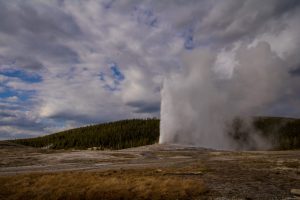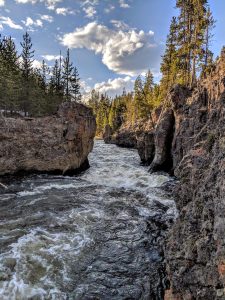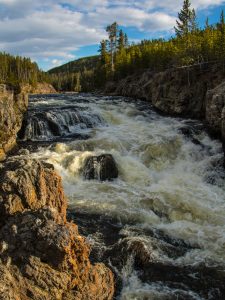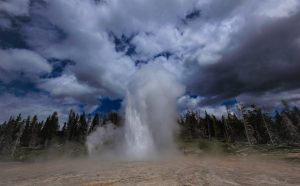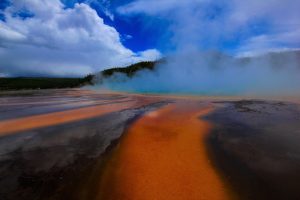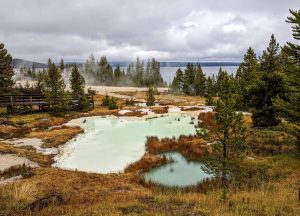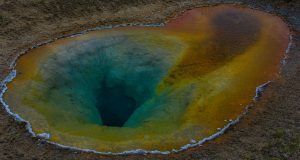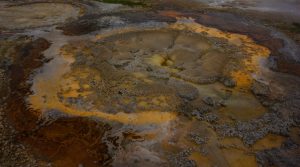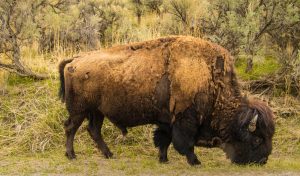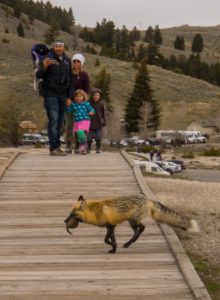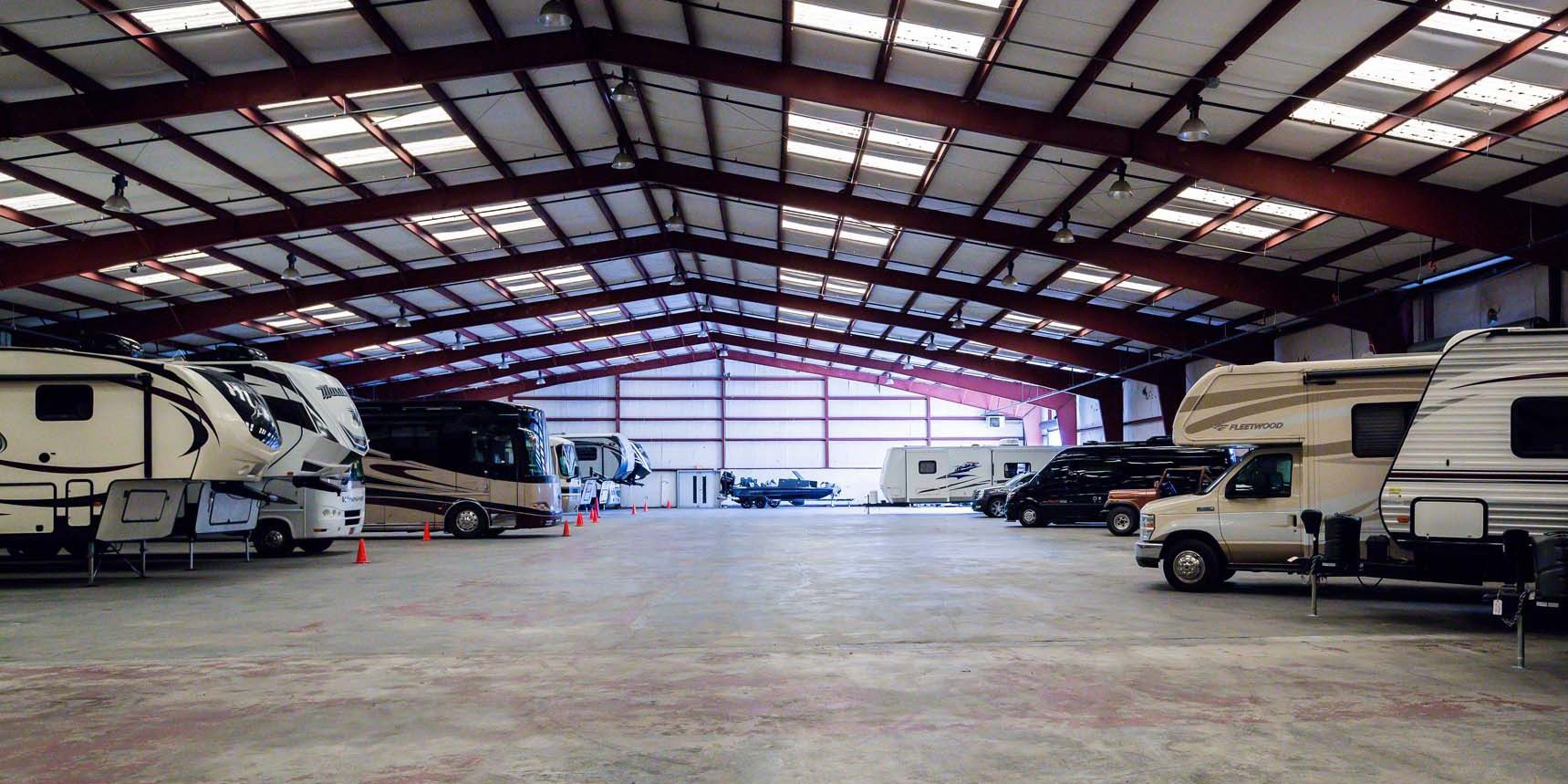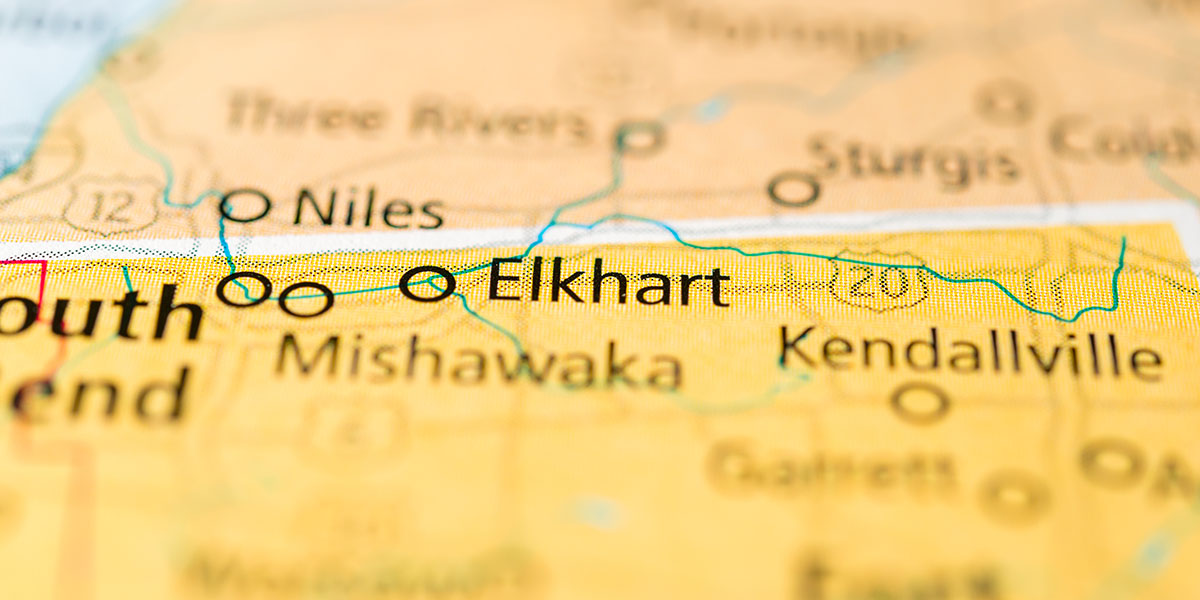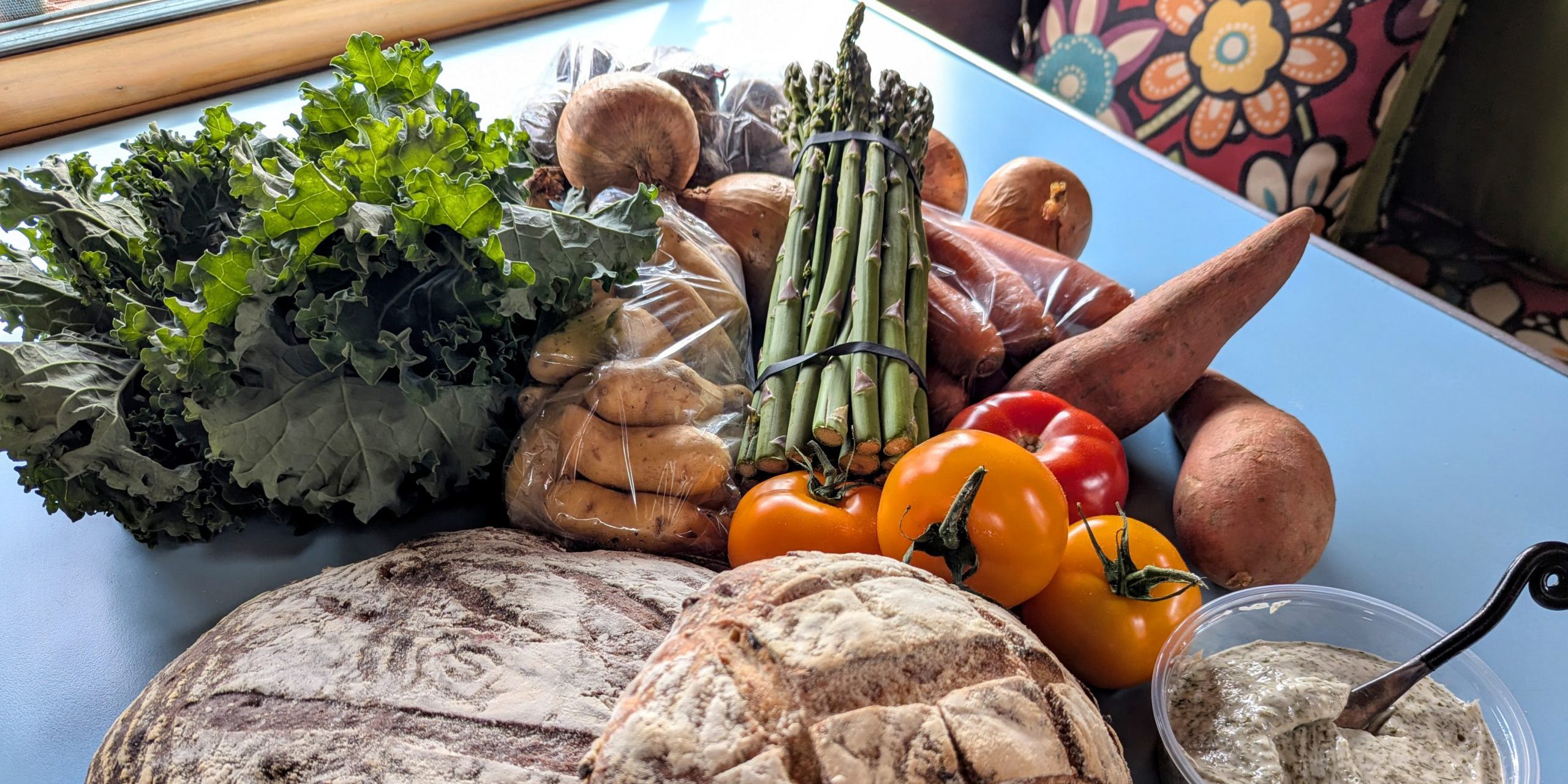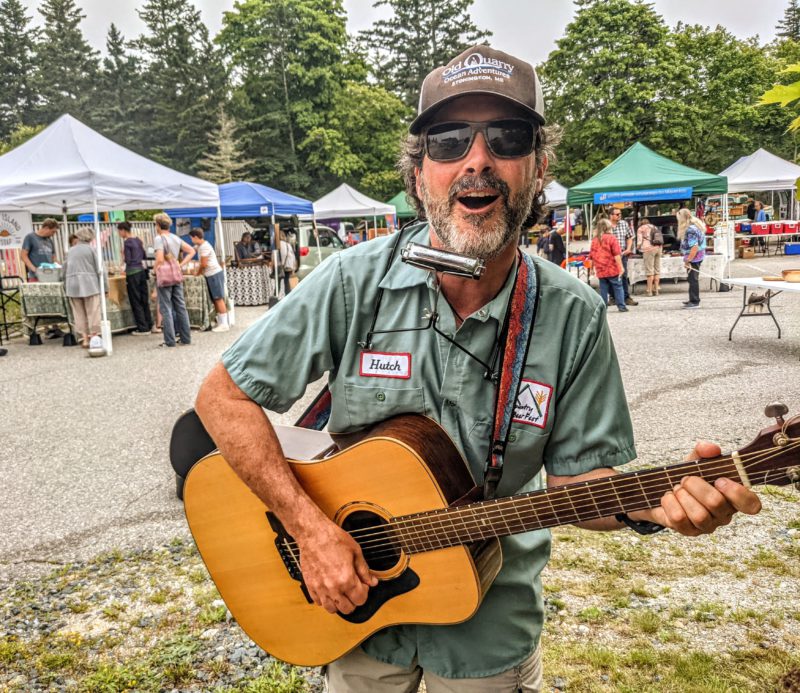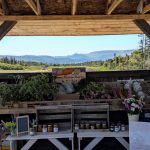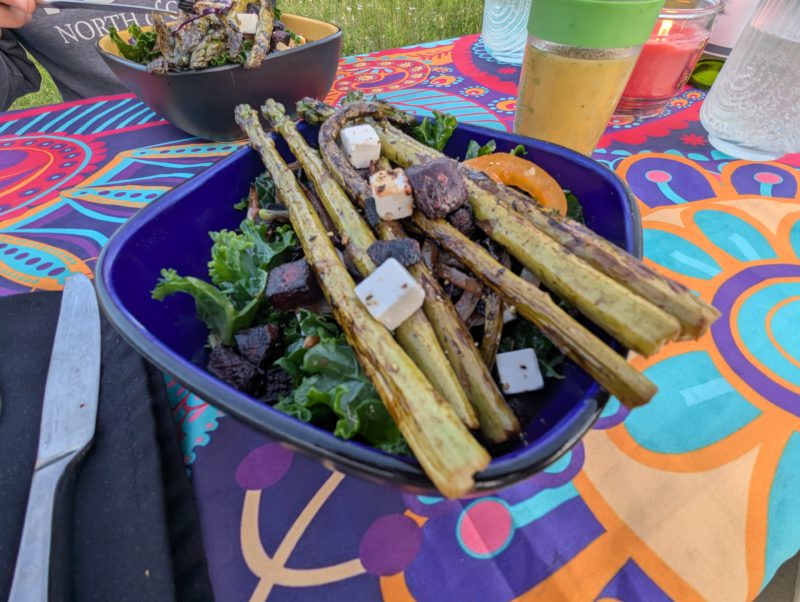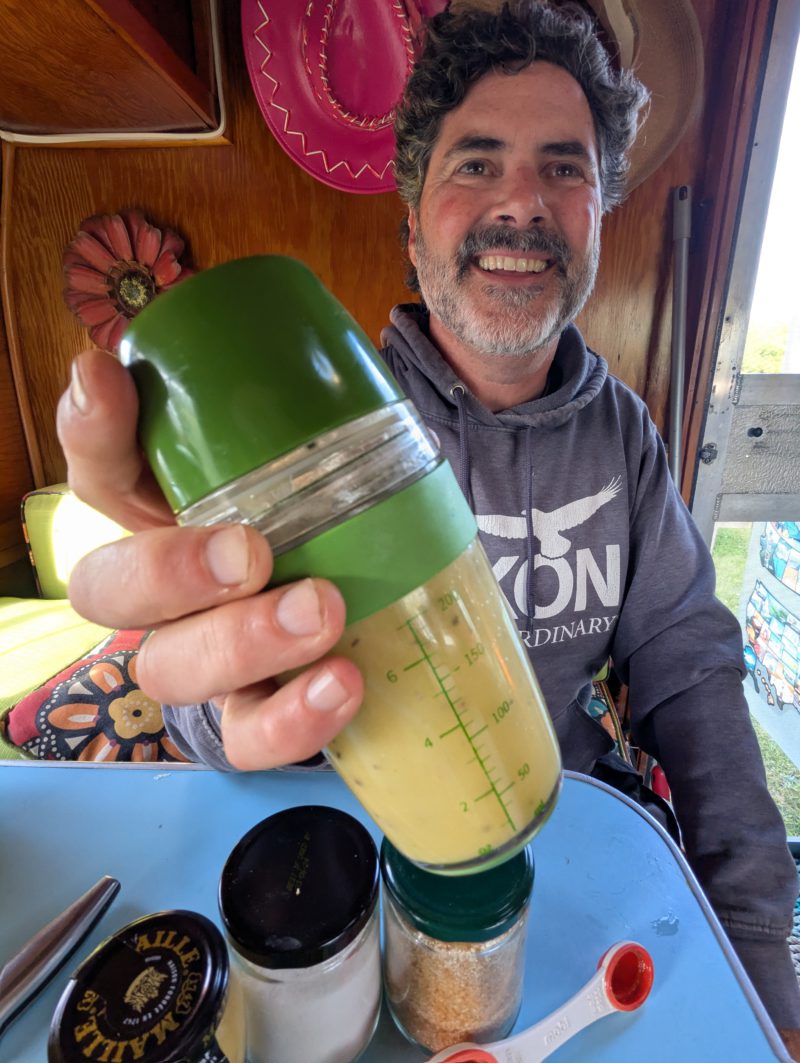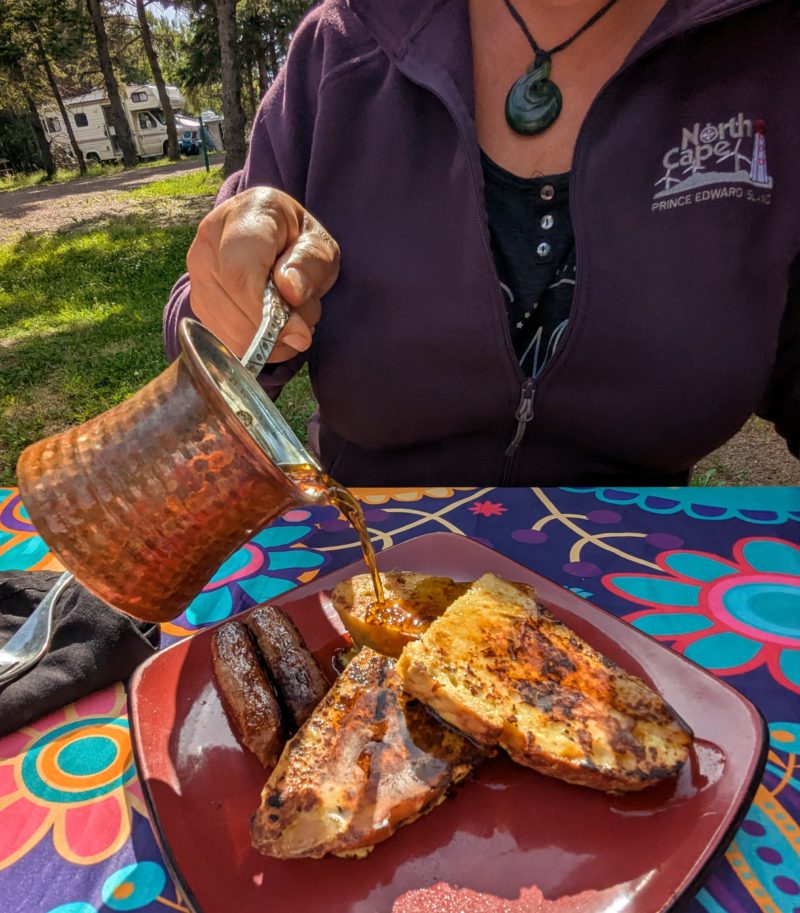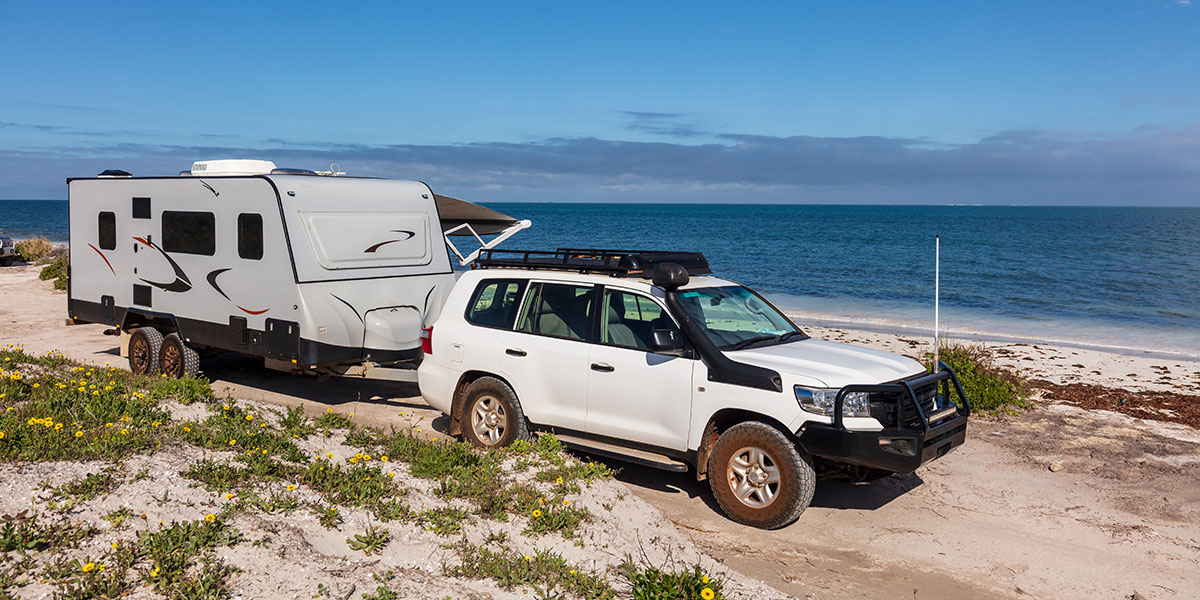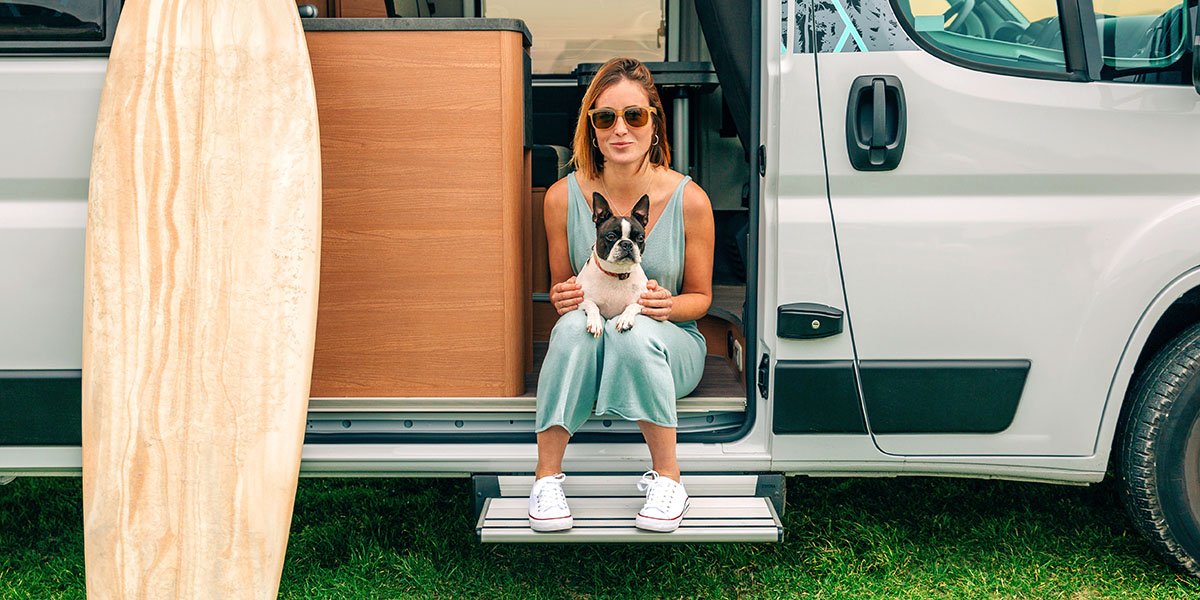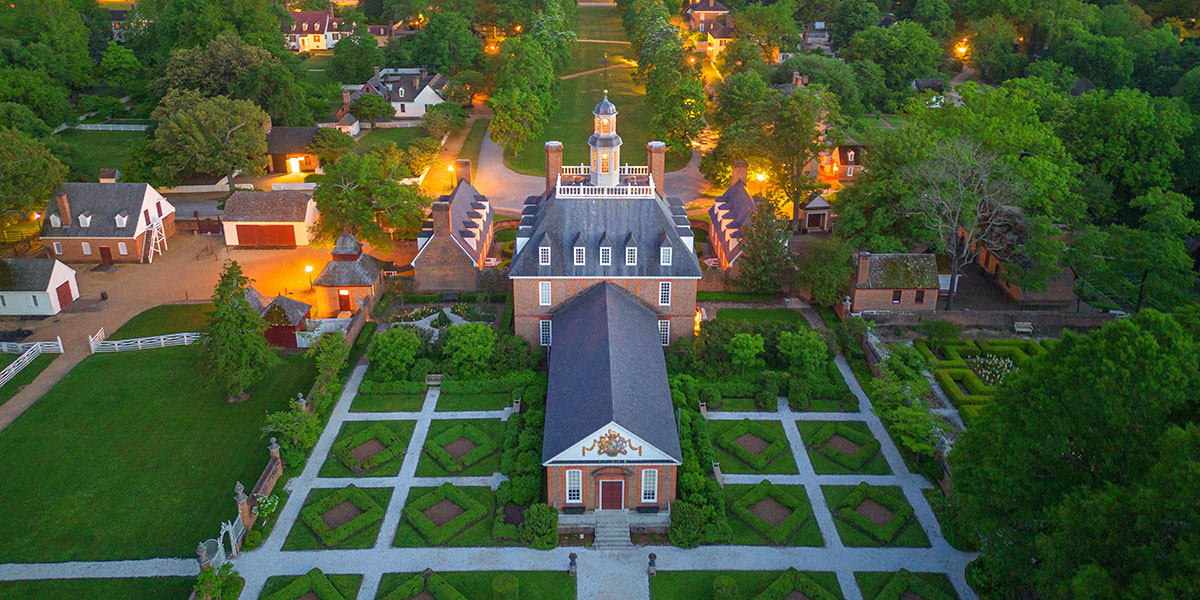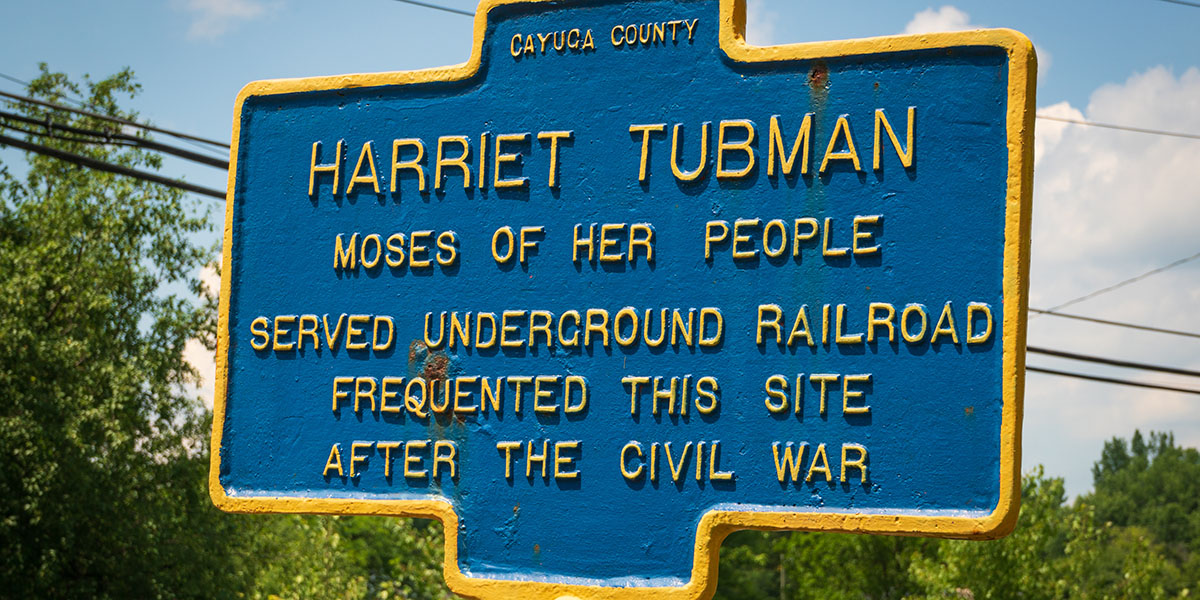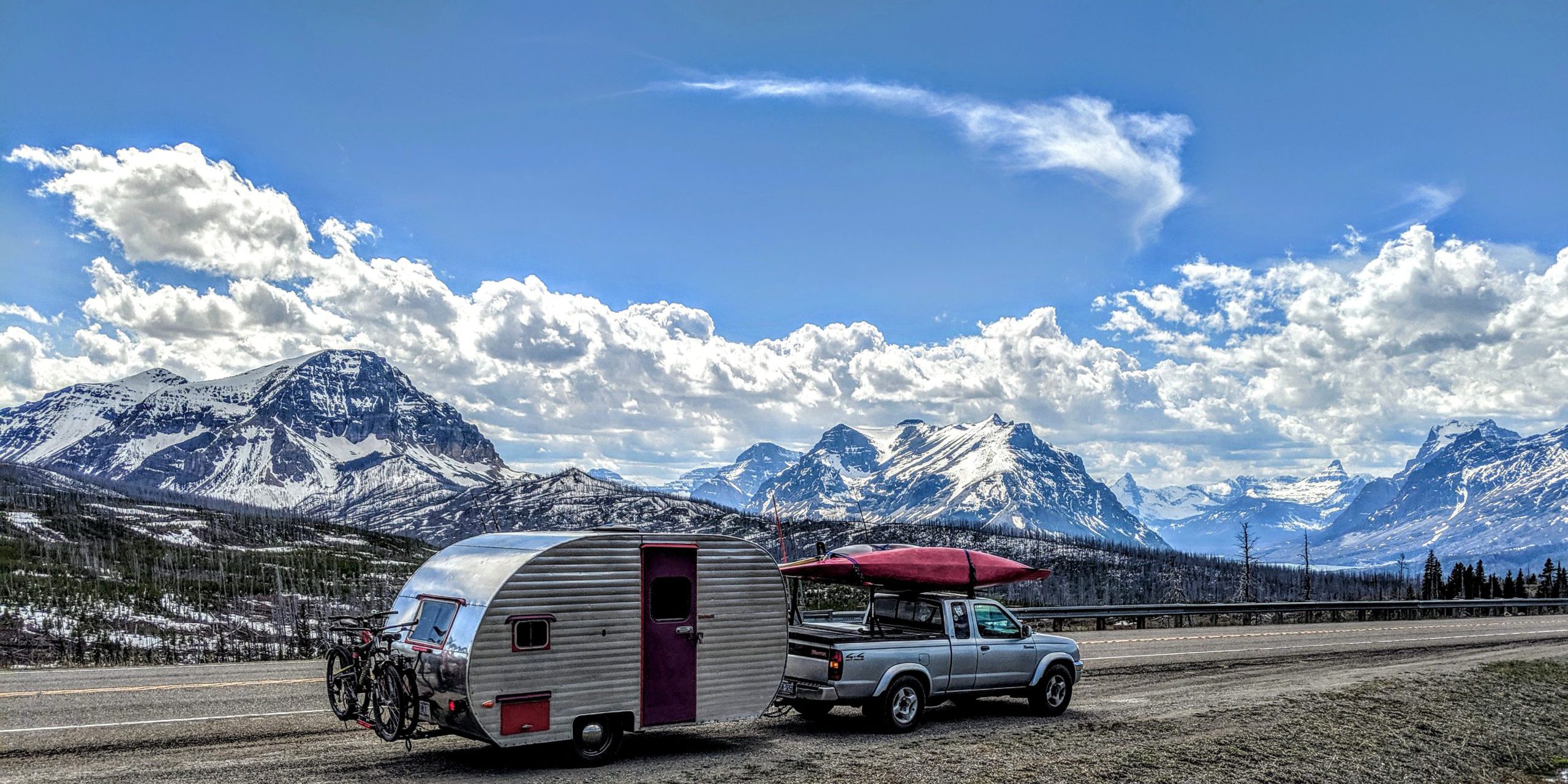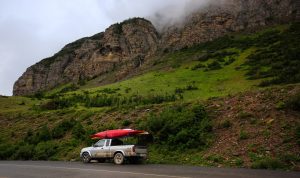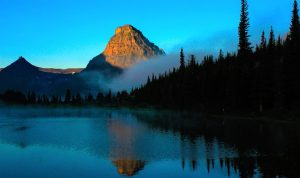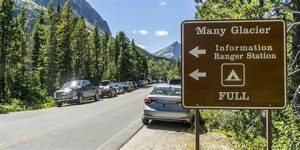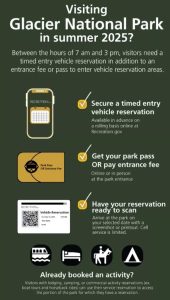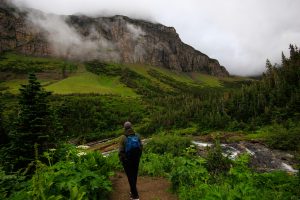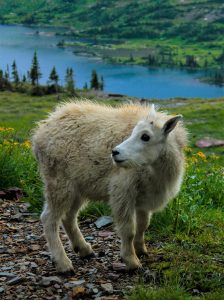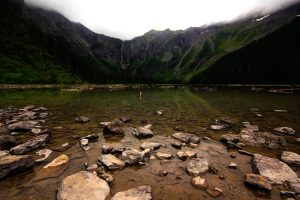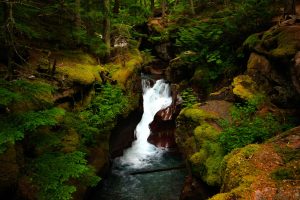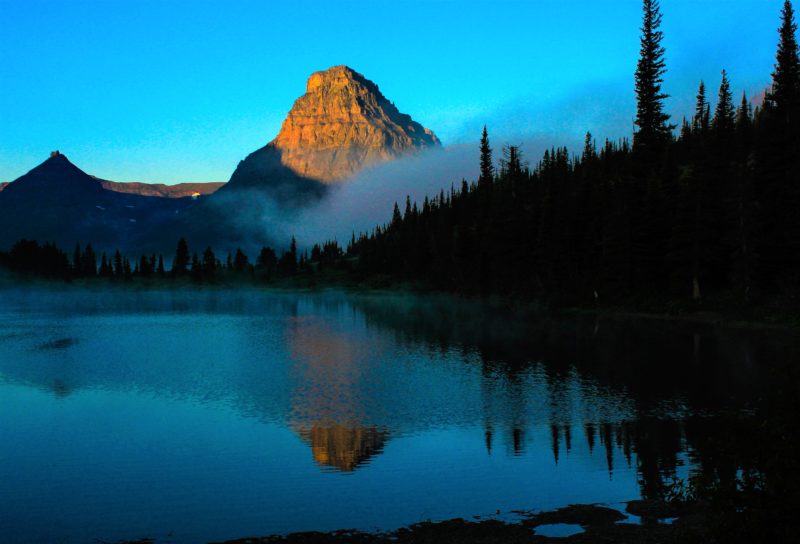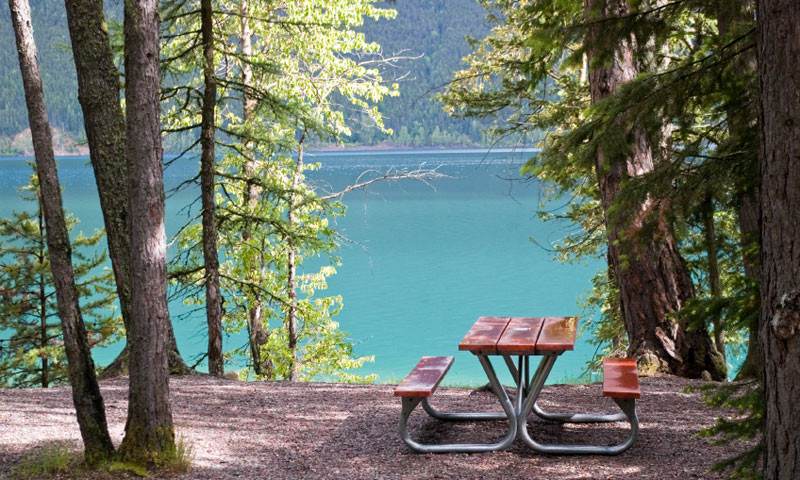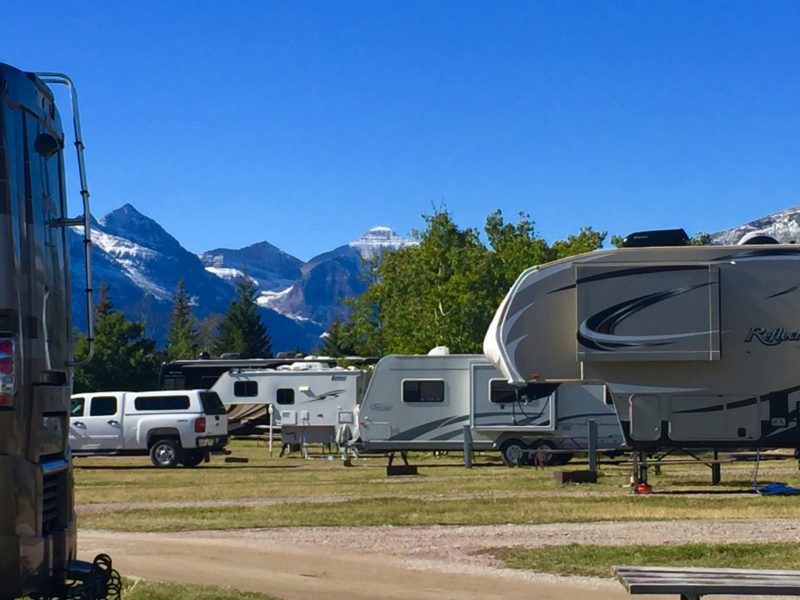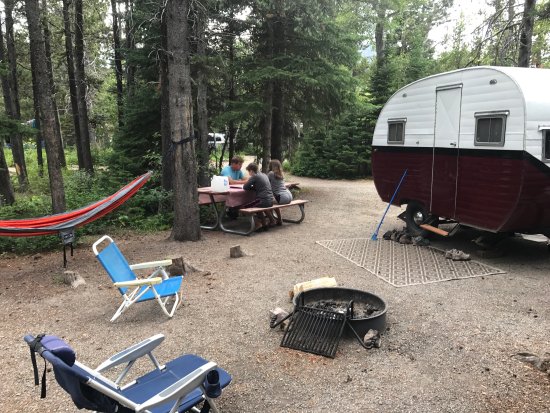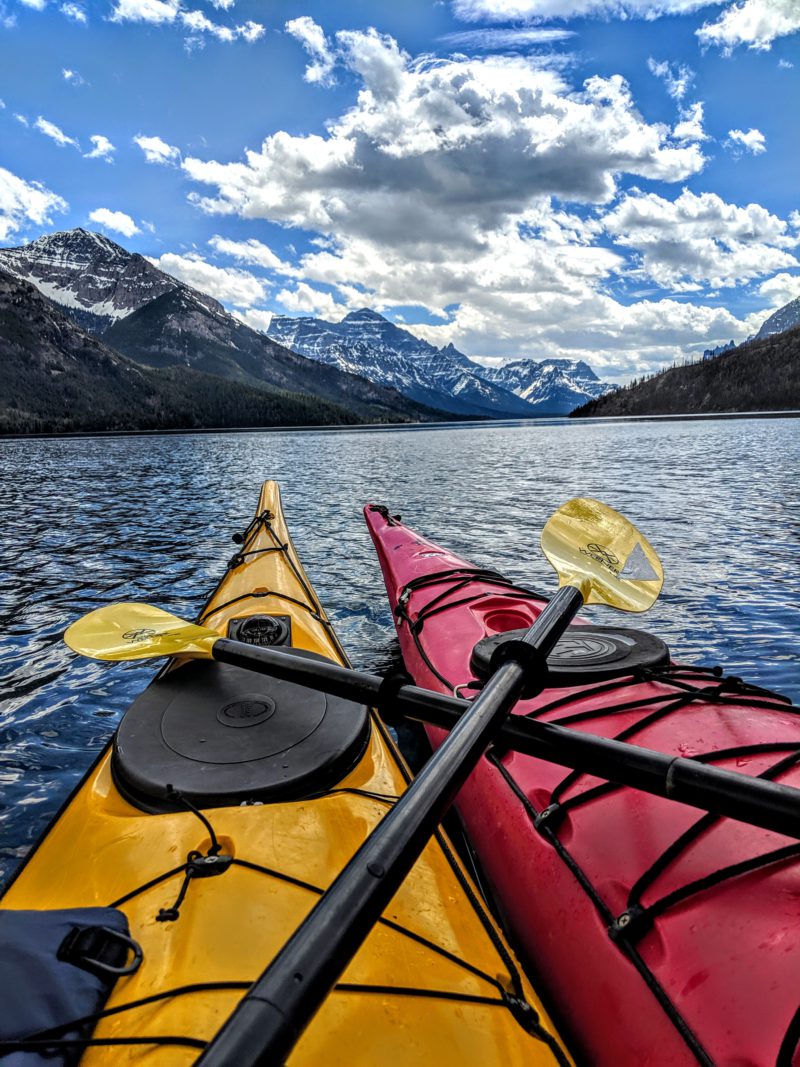When describing Yellowstone National Park, certain words always come to mind. Words like “stunning” and “otherworldly” and “immense.” This national park teems with spectacular wildlife, spans three state boundaries, and draws over 4.5 million people annually. Visitors come to watch the explosive geysers, gaze into geothermal pools, and see awe-inspiring waterfalls. Quite simply, it’s a place like no other. Which is precisely why Yellowstone National Park was designated as the very first national park in the world. (Yes, in the WORLD, y’all!)
In 1872, Yellowstone was given this special designation by the U.S. federal government to preserve and protect it from development — forevermore. This designation still provides not only a safe haven for some of our country’s most charismatic megafauna (bison, grizzly and black bears, wolves, and more) it also protects fascinating indigenous cultural resources. Uniquely, it is a place where visitors can truly immerse themselves in unparalleled natural wonders — like the science of thermophilic archaea, eukarya, viruses, and bacteria. What?! (Our point exactly!)
Yellowstone also happens to be the largest volcanic system in North America. (On top of being one of the largest known volcanoes in the world.) This special place is estimated as an over two-million-year-old, intraplate hot spot fueled by an underground magma chamber. It is constantly changing, shifting, and erupting. Which is causing it to find its way into the news quite a bit lately. (Raging rivers taking out portions of roads … unexpected hydrothermal explosions … and new hydrothermal pools emerging through the surface all occurred the last couple of years.)
So, if you’re wondering if Yellowstone is really that cool — if it’s really worth that big RV trip — all we can say is this: Come and see. And when you do, here are few tips to get the most out of your RV trip.
Scenic Drives
Yellowstone National Park covers nearly 3,500 square miles in the northwest corner of Wyoming. (Three percent of the park is in Montana, and one percent is in Idaho as well.) The park has five entrance stations, with several closed to regular vehicles during winter. It takes many hours to drive between these entrances. (This place is massive.) So, be sure to check the status of roads at the entrance you intend to use while planning your trip and before you arrive. You can also check traveler information websites maintained by Idaho, Montana, and Wyoming.
Traffic is not only influenced by the number of visitors, but also by the roaming wildlife who also share the roads. So, never be in a rush. Prepare to give yourself lots of time. There are plenty of gas stations inside the park, as well as at the north and west entrances.
While every single road in the park is stunning, here are three of our favorite drives.
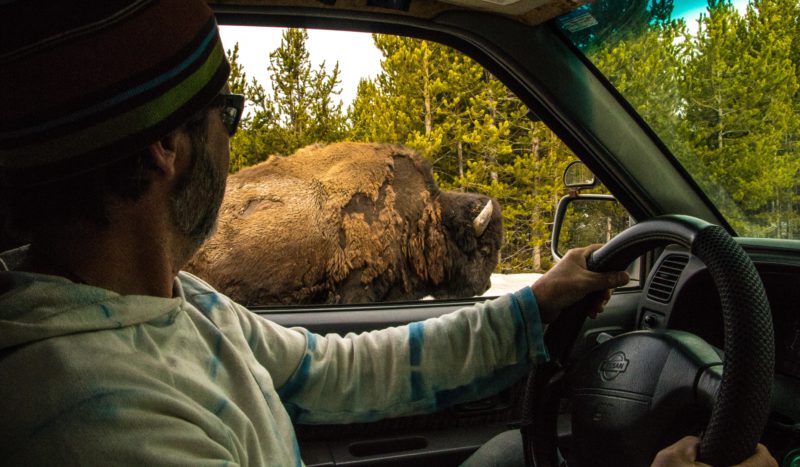
Grant Village to Canyon Village
This section of the park links together three visitor and education centers that can bring much of the park to life. So, be sure to set some time aside for these stops. Stop along the shores of Yellowstone Lake for a super cold-water dip or lakeside picnic. Watch mud bubble in their earthen pots at the Mud Volcano boardwalk area. This spot offers views of some of the most acidic pools in the park. While not as colorful as some other geothermal areas, they do help you appreciate the spectrum of what Yellowstone offers.
Don’t miss the view of the Lower Falls of the Yellowstone, the biggest falls in the park and nearly twice the height of Niagara Falls! The trail to the viewing platform is a short walk from the parking lot. However, the other trails there offer longer range views where you can take in the whole canyon.
North Entrance to Old Faithful
While this drive can be done in a day, we’d recommend at least two to take in all the sights and stops. (Always factor in some cushion for traffic.) The entrance into the park from Gardiner, Montana offers the classic Yellowstone sign and gate. As might expect, traffic can be heavy here. (Everyone wants a photo.)
The drive leads you first into Mammoth Hot Springs. This location is worth the walk in any weather, and the village maintains services and lodging. Plan for stops at the Obsidian Cliffs and Roaring Mountain, with its fumaroles and steaming vents. Then arrive in Norris Geyser Basin — one of the park’s highlights that will introduce you to many geothermal pools and boardwalk trails.
Further, this drive leads you to the most famous geyser basin of them all: Old Faithful and the Upper Geyser Basin. Here, some of the more active geysers can be experienced in a single afternoon. Frankly, no visit to the park is complete without a stop at this visitor center. The iconic lodge was the first of its kind and influenced all national park architecture throughout the land.
West Entrance to South Entrance
This might be the most popular drive through the park. So, plan ahead, be patient, and give yourself some time. (With Grand Teton National Park to the south, many tourists consider this visit a twofer.) The West Yellowstone Visitor Center is a great place to start your visit, while also getting any last minute items in town before entering the park.
The 14-mile drive to the Madison intersection leads you along the Madison River, with a short hiking loop trail at Two Ribbons. Take the short loop road to Firehole Falls. Rejoin the main road, and turn south to enter the most popular section of the park: Midway and Upper Geyser Basins (Old Faithful). The road winds through the continental divide and offers plenty of walks, hikes, and informative stops along the way. Be sure to take in Lewis Lake as well as Lewis Falls on your way out of the park.
Must Hike Trails
Before heading out for a hike, make sure you have your bear spray. (And most importantly, learn how to use it!)
Easy Walks: Geyser, Fumaroles, and Hot Springs
- Upper Geyser Basin to Bisquit Basin Loop. This route will take you on a network of well-marked trails, which include boardwalks and gravel or dirt trail surfaces. So, be sure to bring your map to follow along. While it is the best place to see erupting geysers, it is also the most popular.
- Excelsior Geyser Crater. Boardwalk trail winds through some of the most stunning and largest hot springs in the park including the Grand Prismatic Springs — but hold onto your hat because the wind takes many away from their owners.
- Grand Prismatic Overlook Trail. Include this trail in your visit for a different perspective on this scene. It also leads to the Fairy Falls Trail.
- Mudpot Volcano Trail. For a different perspective, this short walk winds through some of the best mudpots and fumaroles in the park.
Easy to Moderate Hiking Trails
- Fairy Falls Trail. A very popular hike with views of the Grand Prismatic spring and the plunging Fairy Falls. Distance: 5 miles roundtrip
- South Rim Trail to Artist Point. Stunning and relatively level walking from the lower falls on the Yellowstone to the iconic overlook and viewpoint. Many other trails can be reached from this trail to turn it into a day trip. Distance: less than one mile roundtrip
- Pelican Valley Trail. To get away from the crowds, head to the east area of the park and the Pelican Valley area. This trail leads to several other backcountry trails, allowing you to choose your own adventure, with views of Pelican Creek, and Yellowstone Lake, this trail offers a different experience in the park. Distance: 10 miles roundtrip (and definitely more challenging due to length)Note: Backcountry permits are required for overnight camping outside of the developed campgrounds.
RV Parks & Campgrounds
No matter the season, this park is one of the world’s natural wonders and camping inside Yellowstone National Park is one of the best ways to experience this awe-inspiring place! Together, the NPS and Yellowstone National Park Lodges manage ten campgrounds with over 2,000 established campsites. All ten campgrounds within the park are accessible to RVs, each varying in size, amenities, and opening/closing dates.
If you are planning a visit in the shoulder season or off-season, be aware that only a few campgrounds are open. This chart below, found on the NPS page, is one of the most helpful campground charts we’ve seen for planning and reserving your campsites within a national park!
All campgrounds require reservations during the high season. Mammoth Campground is the only first-come, first-serve campground open from October 15 in the fall to April 1 in the spring.
It’s important to note that Fishing Bridge RV Park is the only campground in the park that offers full hook-ups. However, Bridge Bay, Canyon, Grant Village, and Madison Campgrounds do offer dump services, although no hook-ups. Bring your solar panels, and you’ll be all set!
Taking the Two-Campground Approach
If you are planning more than a couple of days in this park, we recommend splitting your time between two campgrounds. This will help reduce your time behind the wheel by exploring the immediate area around each campground. (Thereby easing the traffic jams within the very popular areas of the park.)
Beyond federal campgrounds maintained by the park, the greater Yellowstone area offers an abundance of camping options from RV resorts to dispersed camping:
- Several RV parks and resorts are located in West Yellowstone, just a few minutes from the western entrance to the park.
- National forest campgrounds near the park are a great option when the federal campgrounds are packed and you want an authentic camping experience. There are some good options all around the park. We use The Dyrt PRO app to find them.
- Harvest Hosts and Boondockers Welcome offers members several camping options on the eastern side of the park.
- Dispersed camping is also scattered throughout the mountains, with some good options along Grassy Lake Road to the south. If you are equipped with solar power and interested in off-grid camping or boondocking, check out the iOverlander app for some good overnight options where you will find fewer trees.
Seasonal Advice
June through September is the best — but also the busiest — time, to visit the park. The shoulder season (a couple of months before and after) can offer unique and much less-crowded opportunities.
If you must visit during the summer, our best advice is to get out early and stay out late to avoid crowds in the most popular areas of the park. Go to lesser visited areas in the middle of the day (10am to 3pm), and more popular areas in the morning and evening. A few things to keep in mind:
- Parking is limited. During summer, parking lots often fill by early morning.
- During extreme congestion, access to whole areas may be temporarily restricted to allow for emergency vehicles.
- Traffic moves very slowly on the park roads, mostly due to bison herds crossing or walking along with motor vehicles.
- Summer fire season is a reality. Be ready to change your plans on a moment’s notice.
With the four Ps (patience, preparation, planning, and persistence), you can make your dream Yellowstone National Park trip a reality! We suggest spending at least seven to ten days to make the most of your visit to this spectacular park. And be sure to add a trip to Grand Tetons National Park too. (It’s located just to the south!)
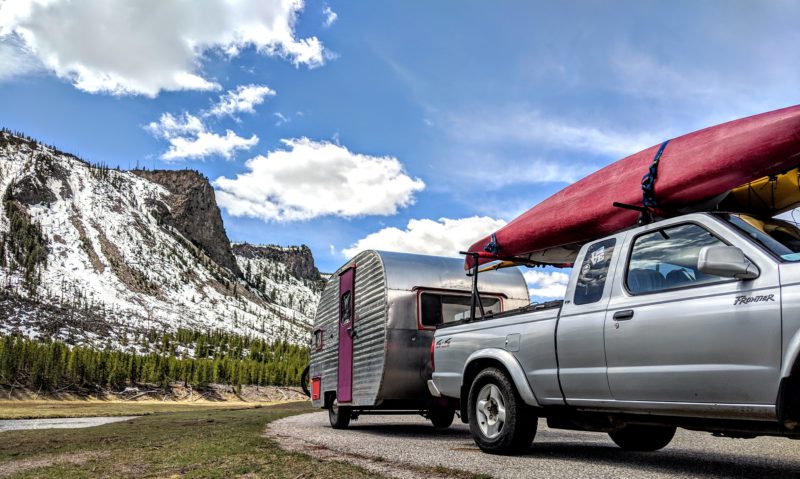
Unique Programs & Opportunities
Geysers and Hot Springs
One of the otherworldly experiences in Yellowstone is witnessing first-hand the geologic wonder of its hydrothermal features — from hot springs to mudpots and fumaroles to geysers. Over 10,000 different hydrothermal features are active within the park, including over half of the world’s active geysers! Hydrothermal features are extremely dynamic, changing throughout the day, across seasons, and over the years, making multiple visits to this park both enticing and intriguing!
Yellowstone Tribal Heritage Center
Created by a partnership between the National Park Service and Yellowstone Forever, indigenous artists, scholars, and presenters from the 27 tribes associated with the park teach visitors through formal and informal education. During the 2025 season, learn about photography, beadwork, moccasin making, dancing, storytelling, sign language, flintknapping, and more!
Photography and Wildlife Watching
From exploding geysers to stunning sunsets to awe-inspiring wildlife, this ever-changing place is a photographer’s wonderland. As a photographer myself, I’ve been known to take thousands of images during a single visit. So, bring those back-up batteries and power banks. You might ask where to start in such an immense landscape. Fortunately, the park has put together a commprehensive list of must-sees for both the budding shutter bug and the professional photographer.
Ranger Programs
Whether it’s guided canyon rim walks or geyser talks that intrigues you, their expert-led programs will further enhance your park visit. Learn about the history, geology, culture, flora and fauna — from the dynamic drama below ground that is changing the landscape to the fascinating creatures which walk, slither, and crawl on top.
Cycling
During the summer months, mountain/road bikes, as well as e-bikes are permitted on established public roads and designated routes in Yellowstone National Park. In the spring and fall, they are permitted on roads closed to regular vehicles, if weather conditions allow. Be advised: Bikes are NOT allowed on backcountry trails, boardwalks, and oversnow routes.
Boating
Exploring Yellowstone’s lakes by boat offers a great way to see the park from a completely different perspective. However, understanding the risk is paramount before launching your boat or paddle board. Despite all of the thermal pools around, lake water temperatures are extremely cold in June (in the 40s Fahrenheit) and may only reach the 60s by late August. Also, sudden strong winds can produce three- to five-foot waves, making open-water crossings very dangerous. All watercraft launched within Yellowstone National Park MUST be inspected for aquatic invasive species prior to launching.
Winter Sports
If cooler temperatures (and no crowds) are more in line with your interests, try a winter visit to the park and enjoy abundant opportunities for getting out into the snow. Once enough snow accumulates (usually by mid-December), most roads stay open to “oversnow” travel only. From the North Entrance in Gardiner, Montana, you can access the Mammoth, Tower, and Northeast ski trails.
In West Yellowstone, Montana, a variety of trails are available for skiing. Although only a few trails are groomed, all unplowed roads and trails in Yellowstone are open to cross-country skiing and snowshoeing. Whether you’re skiing a groomed trail in a developed area or exploring the backcountry, remember that you’ll be traveling in the wilderness with all its associated hazards — assessing the risks and taking safety precautions is paramount! Noted below are the campgrounds that are open during the winter months.
Note: The only way to visit Old Faithful, the Grand Canyon of the Yellowstone, and other popular destinations during winter is by guided snowmobile or snowcoach, or through the Noncommercially Guided Snowmobile Access Program. You can apply for a noncommercially guided snowmobile access permit. Four noncommercially guided groups are allowed to enter the park daily — one at each oversnow entrance.
